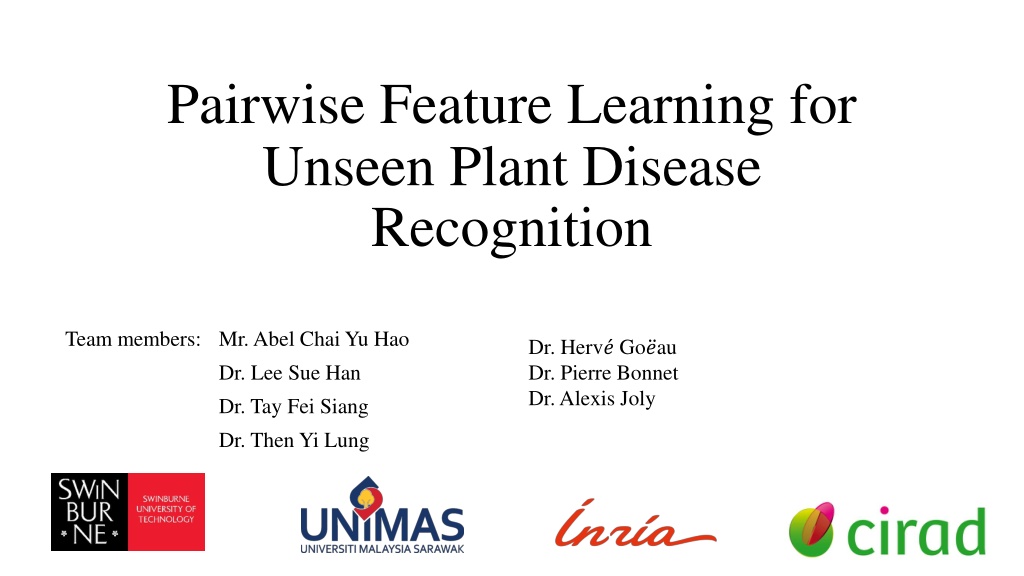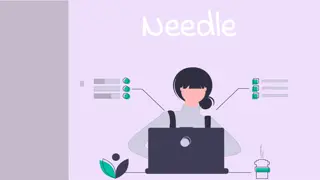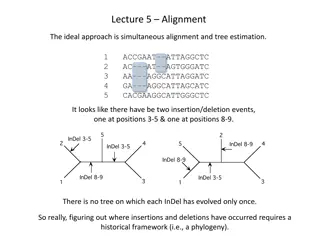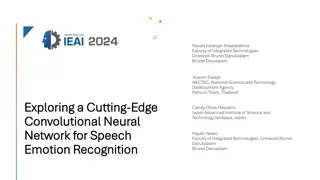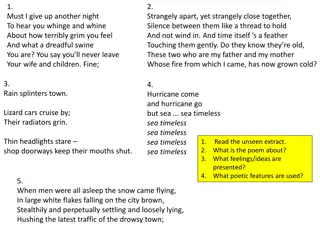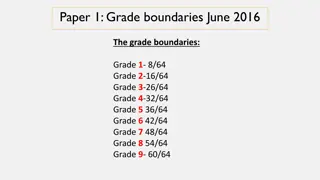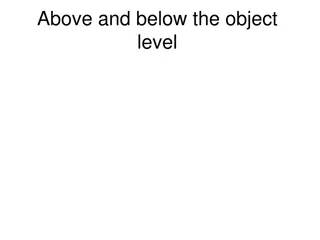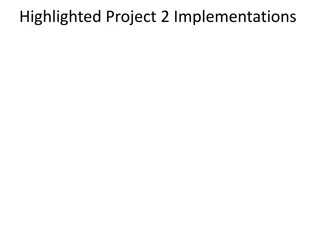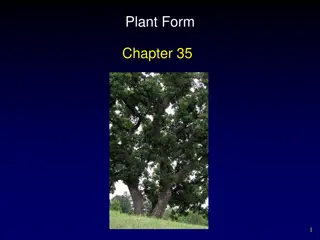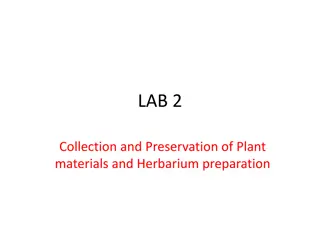Pairwise Feature Learning for Unseen Plant Disease Recognition
Plant diseases pose a significant threat to agricultural production, often caused by pathogenic organisms. This project focuses on pairwise feature learning for the recognition of unseen plant diseases. The research aims to design a model that can effectively classify both seen and unseen compositions using information solely from the training dataset. By leveraging visual data on crop species and diseases, the proposed method aims to enhance the classification performance for unseen crop-disease pairs, surpassing current state-of-the-art models.
Download Presentation

Please find below an Image/Link to download the presentation.
The content on the website is provided AS IS for your information and personal use only. It may not be sold, licensed, or shared on other websites without obtaining consent from the author. Download presentation by click this link. If you encounter any issues during the download, it is possible that the publisher has removed the file from their server.
E N D
Presentation Transcript
Pairwise Feature Learning for Unseen Plant Disease Recognition Team members: Mr. Abel Chai Yu Hao Dr. Lee Sue Han Dr. Tay Fei Siang Dr. Then Yi Lung Dr. Herv ? Go ?au Dr. Pierre Bonnet Dr. Alexis Joly
Introduction Plant diseases are a major threat to agricultural production and mainly caused by pathogenic organisms. Apple black rot Corn common rust Peach bacterial spot Tomato late blight Disease labels Crop labels
Zero Shot Classification Training data Tomato black rot Tomato bacteria spot Tomato bacterial spot Apple black rot Apple black rot Grape black rot Model cannot perform Decision boundaries Testing data Tomato black rot Unseen data Grape black rot
Related work Previous work 1. Symptom-oriented feature modeling strategy [15,16] Model focuses on disease information only Categories different crop with same disease into single class Limitation: not corresponds with to the way of plant pathologists Plant information can be useful in classification tasks. Training data Class 1 Tomato bacterial spot Apple black rot Class 2 2. Conditional multi-task learning (CMTL) model [17] Model focuses on both crop and disease information Establishes a link between crop and disease features to encourage information sharing Limitation: only train with seen data Grape black rot
Motivation (new) Tomato bacteria spot Training data Apple black rot Tomato bacterial spot Tomato bacterial spot Apple Apple black rot black rot Grape black rot Grape black rot Model can perform Tomato black rot Testing data (unseen data) Decision boundaries Tomato black rot Tomato black rot (unseen data) Unseen data Grape black rot
Research objective 1. To design a model to classify the seen and unseen compositions with only information from seen compositions from training dataset. Contribution 1. Our studies provide a new direction on how to effectively use widely available labeled plant disease data to identify unseen classes based on visual information of the two important concepts of crop species and diseases. 2. Our proposed method can improve the classification performance of unseen classes of crop disease pairs and outperform the state-of-the- art model in the identification of multiple crop-diseases
Methodology bacterial spot Tomato Seen data Seen data Training data Tomato bacterial spot Unseen data Apple black rot Seen data Grape black rot Apple black rot Crop Disease Seen data Grape
Methodology (Proposed model) Transfer knowledge from seen data to unseen data and further enrich our training dataset synthetic Original Tomato Apple Tomato Apple bacterial spot class black rot class black rot class bacterial spot class Tomato Apple synthetic Original Tomato bacterial spot (seen) Apple black rot Tomato black rot Apple bacterial spot (unseen) Tomato bacterial spot Apple black rot (seen) (unseen) synthetic Original bacterial spot black rot black rot bacterial spot Tomato class Apple class Tomato class Apple class bacterial spot black rot
Methodology Tomato Tomato bacterial spot Tomato bacterial spot Single or two-head classifier bacterial spot Information sharing between synthetic and original features Information sharing between crop and disease features Residual link (RC) ????? ???? ???? ??????? ????????, ??= ???? ???? ??????? ????????, ??+ ???????? ???? ????????, ?? ????? ???? ???? ???? ????????, ?? = ???? ???? ???? ????????, ?? + ???????? ??????? ????????, ?? Develop two stage training (train ?(?) and ? ? first then ?(? ) Moving weighted sum (MWS) ? Focus on ?(?) and ? ? Focus on ?(? ?(?) ??????= ? ?? ?+ ?? ? + (1 ?)?? ? ?(?) Training timestamp ?(?)
Results Comparing with SOTA Qualitative analysis (t-SNE map) ViT single network Seen data (red) Ablation study CMTL-ViT Unseen data (purple, green, blue) Proposed model
Conclusion Our proposed model able to enrich the class diversity of the training data. Our proposed model outperform SOTA models for zero shot classification in plant disease identifications. Future work Improve synthetic features to further boost prediction performance. Use generative model to generate robust features while further enrich the class diversity of training data
